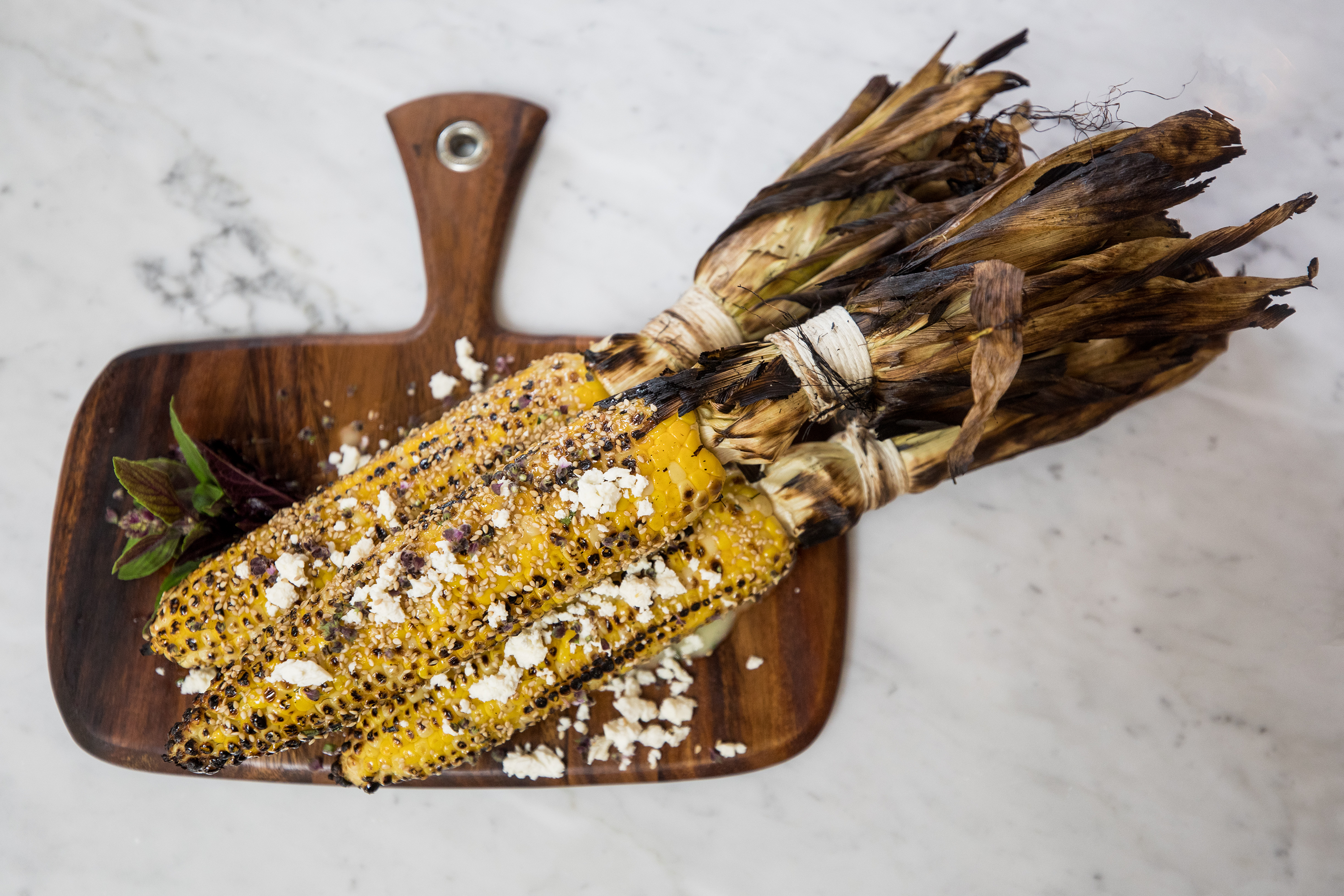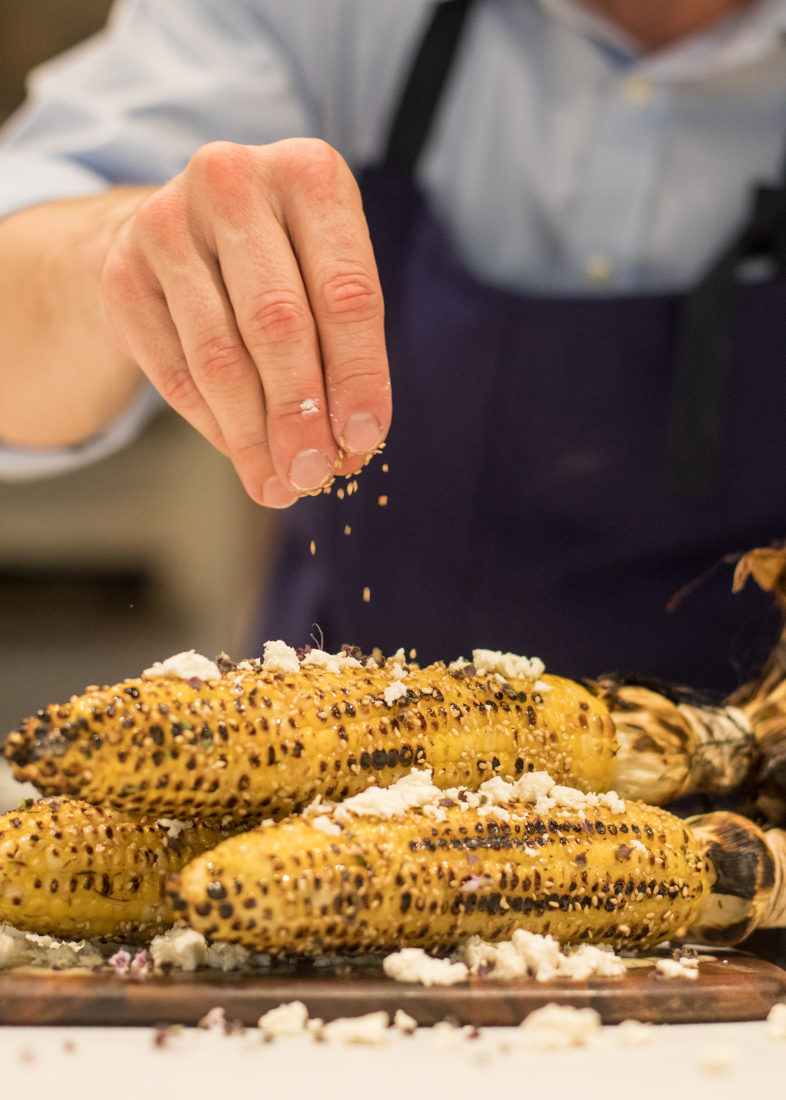
Photo: Nicole Glass
Chef Reid Shilling.
It’s impossible for Chef Reid Shilling to separate childhood memories from meals. In preparing to open Shilling Canning Company, his new Washington, D.C. restaurant, the Baltimore native and former sous chef at the Dabney has been flooded with culinary flashbacks. His most recent: beach-bound drives along Maryland’s Eastern Shore stopping for tomatoes, green beans, peaches, and corn at roadside farm stands along the way.
It’s that last ingredient, corn, that really makes the Thomas Keller-trained chef nostalgic. “It’s my heritage,” Shilling says.
For years, Maryland was synonymous with Silver Queen corn. The tender, creamy white variety that Shilling grew up eating was introduced, according to Slow Food USA, in 1955, and quickly became a favorite throughout the South. Washington City Paper writer Kim Farmer attributes Marylander’s special passion for the hybrid to its debut three years after the opening of the Chesapeake Bay Bridge which, as Shilling recalls from his own youth, channeled beachgoers through Eastern Shore farmland stopping for fresh produce en route to vacation like St. Michael’s , Maryland, or Rehoboth, Delaware. By the 1990s, improved hybridization had given way to sweeter options like Argent, White Magic, and 81W that lasted longer once picked, dethroning Silver Queen. But for Shilling, that flavor imprint runs even deeper than road-trip recollections. His family has been farming Mid-Atlantic soil for generations.
“They grew wheat, corn, tomatoes, and peas,” he says. In 1935, his great-uncles decided to capitalize on their farm’s bounty and opened Shilling Canning Company in Finksburg, Maryland.
“They were very, very keen on the quality of their ingredients. That’s what they built their farm on and that’s what they built their canning facilities on,” Shilling says. “They went so far as to label their cans: ‘This produce is packed fresh from our own farm.’ It was always a matter of quality first.”
Shilling wants to reflect that same attitude at Shilling Canning Company, his new restaurant in the Yards, which is scheduled to open in the week of July 8. Shilling Canning Company will draw inspiration from the chef’s agricultural roots while showcasing the best of the Chesapeake region’s ingredients in dishes like his Husk Roasted Corn.

Nicole Glass
To make his Marylander’s take on Mexican elote, or street corn, Shilling roasts locally sourced sweet corn inside its husk over a wood fire. “We put the corn as close to the ember pile as possible. To mimic this at home, lower your grill grate all the way to the coals. The husk protects the corn kernels, so don’t worry about over-charring the outside; you just don’t want to burn through the husk,” he says.
After roasting, Shilling peels and ties back the husks. He gives the corn a coat of oil and reheats it on the grill. After cooling, he coats each cob with homemade tarragon aioli and trades traditional crumbled cotija cheese for Shepherds Manor Creamery Fetina—a European-style feta, made in New Windsor Maryland, about 20 minutes from the original Shilling Canning Company. Then he dresses the corn with basil buds and toasted benne seeds, an ingredient Shilling discovered while working for The Dabney’s executive chef Jeremiah Langhorne.
Even better? Thanks to the tied-up husks, “it has a built-in handle,” Shilling says.








